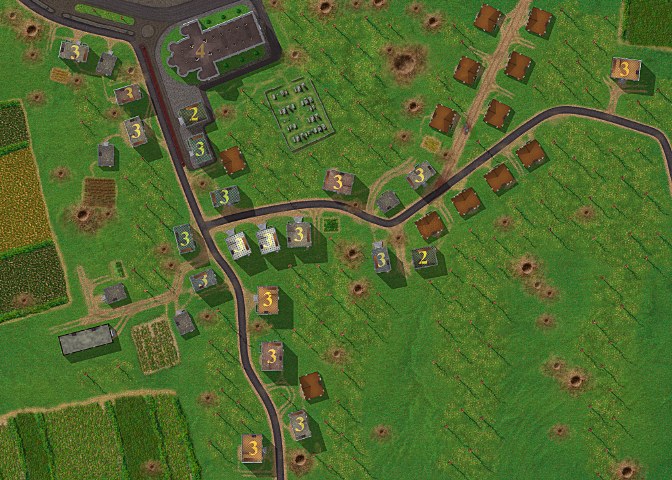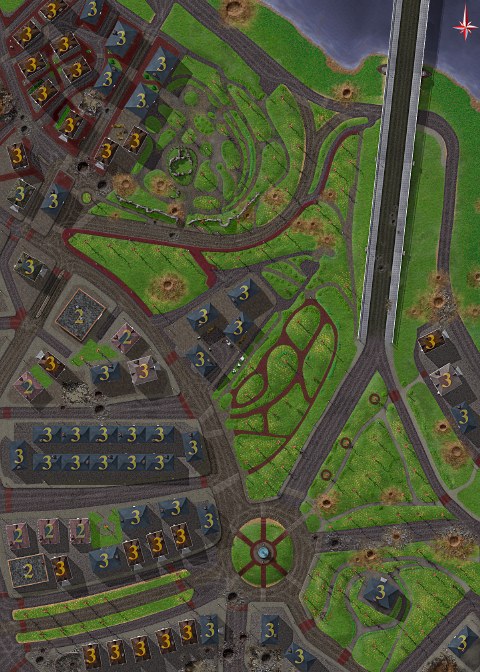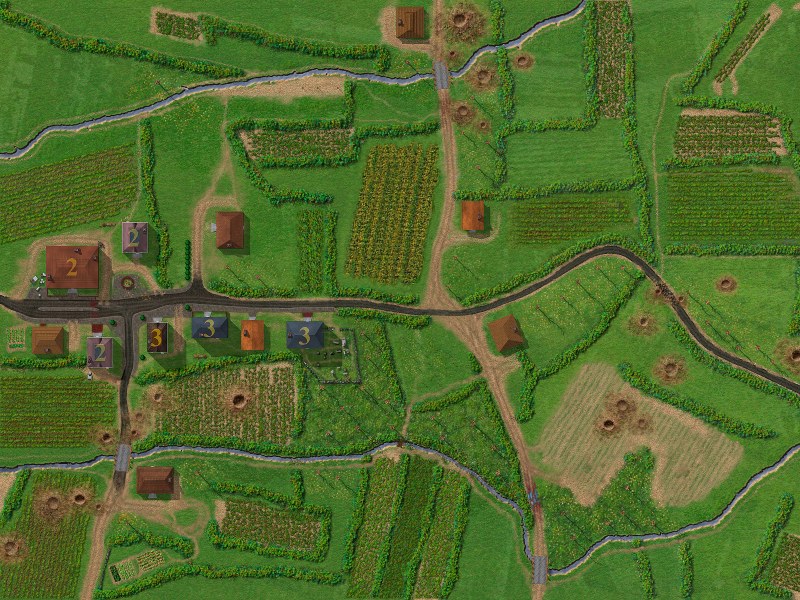—
Found this with Wayback machine - Maybe some hard-core modders will find it interesting;)
A team of 8 artists spread between Atomic Games and Microsoft produced the map images for the game Close Combat 2: A Bridge Too Far.
Information provided by David S. McFalls of Atomic Games.
How it was created:
The game engine delivers a top view of the battlefields of Holland as they were during Operation Market Garden in 1944. This is the battle featured in the 1977 Richard Attenborough film, "A Bridge Too Far." (Film info and link provided by The Internet Movie Database, http://www.imdb.com.) Map features such as roofs, tree canopies, shell holes, building destruction, and bridge destruction are sprites handled during play by the game engine -- all laid in over the foundation image. The maps try to accurately portray segments of actual battle areas in the scale of 5 pixels per meter. Some liberties were taken with textures and colors in the interest of gameplay and clarity, but historical accuracy has been a strong driving force.
The map creation process starts with maps and photographs from the literature, war museums, and town halls of Holland, (now The Netherlands.) Atomic Games sent a man to step through the battle sites and record every detail. Museums were scoured for maps, photos, and unpublished battle information. Aerial photographs were the most valuable resource not readily available over here. They took the aerial reconnaissance photos and layered in important details from maps where correlations could be found (sometimes only map data was available for a specific battlefield). The resulting image was then imported into WCS V5 (World Construction Set) as a faux DEM using the DEM Convert utility. The elevation map was then crafted over the false DEM using the DEM Designer, and subsequently gridded for render. Color maps were used to control dirt placement (roads, trails, etc) during render.
They had WCS render the map images as a single huge seamless whole. The WCS render output was then transported to Lightwave scenes as texture maps for render within the composite battlefield image. The DEM itself was also exported from WCS to Lightwave whenever the map foreground elements laid shadows over obvious terrain irregularities. Additionally, they created an elevation image of the DEM for later use during the process of creating the all-important data layers for a map.
The vegetation was created in a wide variety of ways. They used both aerialphoto textures and computer generated textures. They used Lightwave [Newtek] directly, the Lightwave plug-in DAB [MetroGrafx], Photoshop [Adobe], and the Fractal Design Painter's [Fractal Design] Image Hose. No texture was immune from hand-tweaking during the final pass.
Getting all the information about the finished map into the game was a separate, lengthy task. They used the Special Buffer image process plug-in for Lightwave to create a grey-scale image. The plug-in creates an image where each shade of grey represents a separate type of underlying terrain element (based on a unique surface attribute). Dirt, plowed fields, three-story stone building wall, windows, roads, trees, rail road tracks, dead cows, whatever. This element image and the elevation image are then processed to provide one of the map data layers. The game also figures out where the water is during this process (Sea Level is passed in with the elevation image limit data).
| M131 Driel.JPG | ||
| Description: |
|
|
| Filesize: | 126.13 KB | |
| Viewed: | 2553 Time(s) | |
 |
||
| M211 Nijmegen.JPG | ||
| Description: |
|
|
| Filesize: | 123.55 KB | |
| Viewed: | 2553 Time(s) | |
 |
||
| M320 Schjindel.JPG | ||
| Description: |
|
|
| Filesize: | 192.63 KB | |
| Viewed: | 2553 Time(s) | |
 |
||
| Atomic map making CC2.zip | |||
| Description: |
|
Download |
|
| Filename: | Atomic map making CC2.zip | ||
| Filesize: | 473.05 KB | ||
| Downloaded: | 284 Time(s) | ||
—
Very interesting. I kind of remember reading about this but not really, probably long time ago. Cheers.
—
Great and interesting info!
Thankyou
output generated using printer-friendly topic mod. All times are GMT